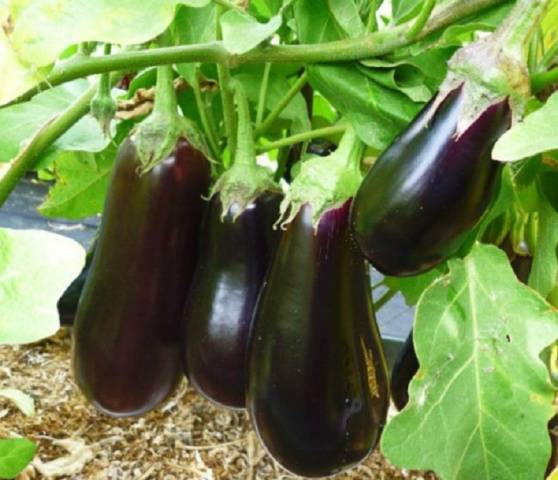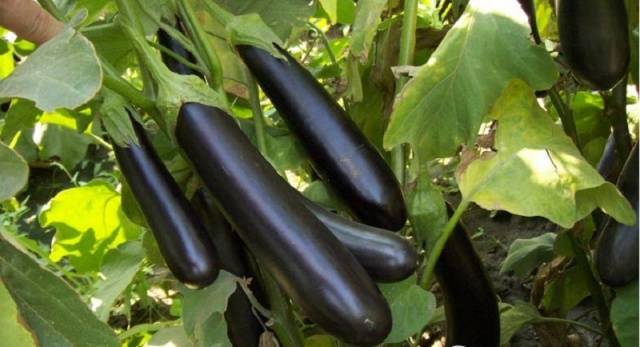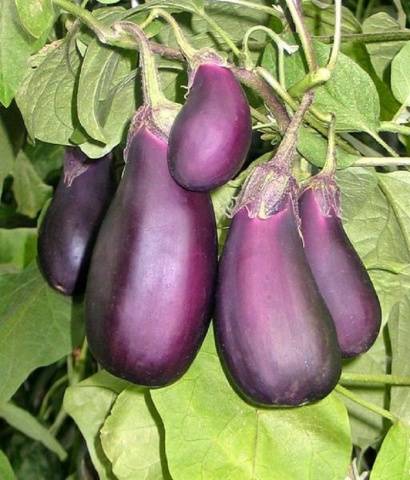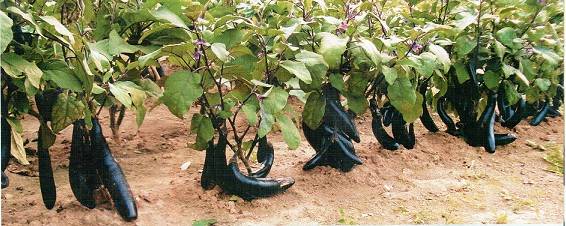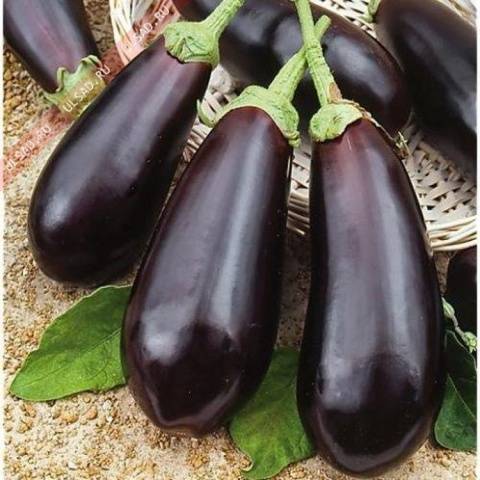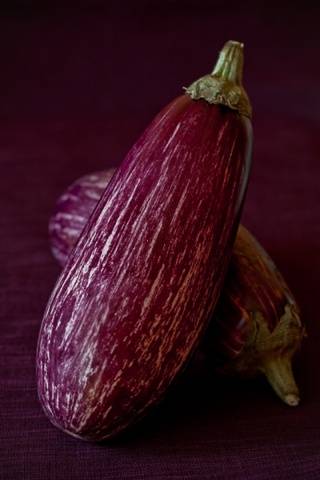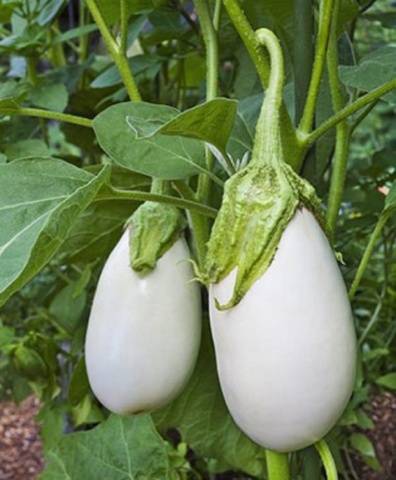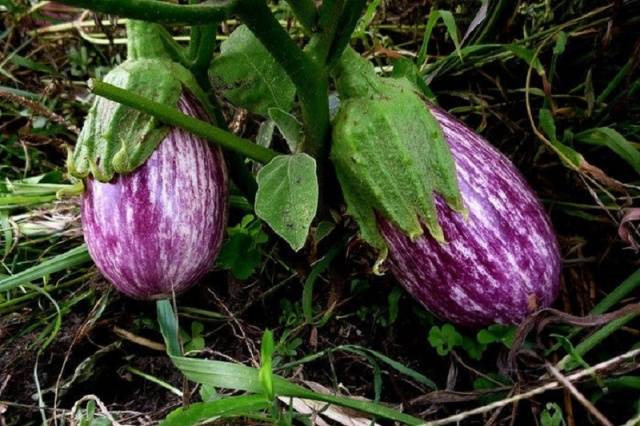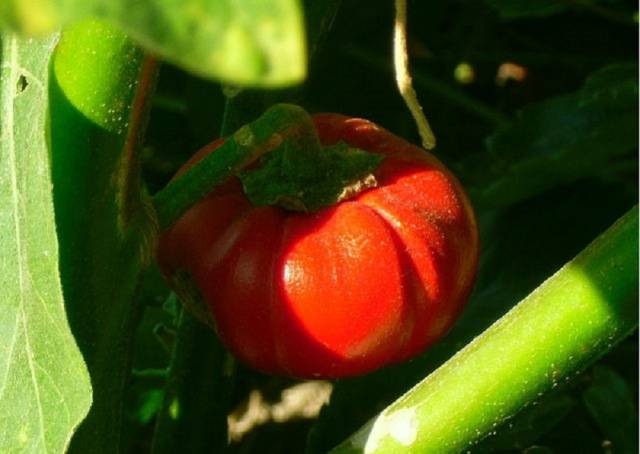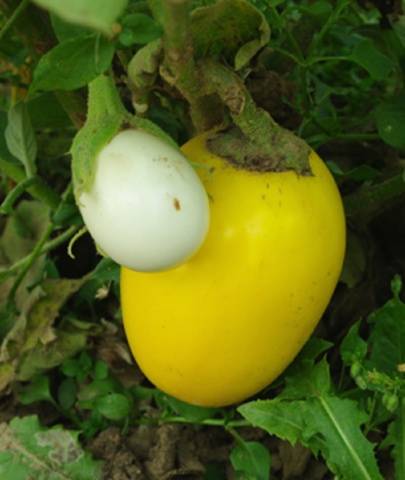Content
Eggplant is an unsurpassed vegetable. Contains a large amount of proteins, minerals and fiber. Therefore, it is considered a dietary product and is appreciated for its taste. Eggplant received professional recognition much later than other vegetables. Wild plant species are found in India, South Asia and the Middle East. The scientific name for eggplant is dark-fruited nightshade, the folk name is blue.
Although this name does not quite fit now. Currently, eggplant is known all over the world and is found in such a color scheme that it is inappropriate to call it blue. New varieties are constantly emerging that provide increasing nutritional value. Therefore, choosing a high-yielding eggplant variety is still better among modern species. This is easily explained by the fact that breeders are constantly working to improve varieties. Each new species surpasses the previous ones in many ways. The main eggplant varieties differ in:
- color (from white and black to striped);
- form;
- the size of the bush;
- ripening time;
- taste;
- disease resistance.
In terms of ripening, immigrants from the south are divided into:
- early maturing;
- mid-season;
- late ripening.
If a decision is made to grow a healthy vegetable, then you should first decide on the desired harvest time. In the open field, there are more difficulties during the ripening period of vegetables. Elite varieties are whimsical to conditions and demanding care. If the weather does not work out or knowledge fails, then you can be left without a good result. The yield is influenced by:
- Any temperature fluctuation ambient air. A sharp increase or decrease leads to the fall of flowers and ovaries. Optimum values are considered to be 25 - 27 ° C. Subzero temperatures and long-term drops cause plant death. Below +15 ° С Seeds do not germinate at all.
- Light intensity... Eggplant growth slows down in cloudy weather. Severe sunburns are no less harmful.
- Transplants... Eggplant does not tolerate transplanting well. Any damage to the roots leads to a decrease in survival rate, weakening of the plant.
- Stocking density... Thickened seedlings of eggplant grow slowly, form small fruits.
- Soil composition... It is advisable to plant on light soils, fertilize the garden well.
But, for novice gardeners and those who are going to grow eggplants for the first time, there are the most unpretentious and productive varieties. Very convenient types that are suitable for greenhouses and open ground at the same time.
Early varieties of eggplants
Early maturing vegetables are good for growing in greenhouses. In the open field, they give a stable harvest at a favorable temperature. Therefore, they are suitable for regions with warm climates. Suitable for areas with unstable temperatures. Early ripening makes it possible to harvest before the cold weather. What varieties deserve attention?
"Alekseevsky"
Suitable for open and closed ground. The shape is classic for lovers of dark purple color. It is considered a medium eggplant by weight. An adult fruit gains up to 150 g, has no bitterness.
Ripening period up to 130 days. Low-growing (up to 60 cm in height), semi-spreading plant with good transportability and high yield.Seeds are sown at the end of February, they are planted in the greenhouse in mid-May. For open ground, the best time is early June. Susceptible to gusts of wind, prefers a sheltered growing area. Resistant to viral diseases.
"Robin the Hood"
An excellent early maturing variety with high adaptability. Fruits appear within 100 days after seed germination. Differs in good survival rate, it is considered a suitable variety for beginner gardeners. It can be grown even in unheated greenhouses without fear of losing crops. It has a large fruit (up to 280g), pear-shaped and traditional lilac color, weak thorns. Adult bushes are undersized, spreading, up to 90 cm high. It is appreciated for its unpretentiousness and taste. Suitable for all types of workpieces and can be planted in a vegetable garden with different growing conditions.
"King of the North F1"
The earliest high-yielding variety. A rich harvest can be harvested 90-100 days after germination. Valued for qualities such as:
- good seed germination;
- cold resistance;
- excellent fruit set.
Gives a stable yield even when the temperature drops... Fruits are black-purple in color, elongated cylindrical in shape. The taste is excellent. The lack of bitterness in the fruits allows you to cook dishes from them without soaking. It is planted in the garden in a seedling way. There are no thorns on the stalk, which also draws attention to this variety. In mid-May, seedlings are planted in greenhouses. For open ground, the time comes after the end of return frosts. It is recommended to grow the variety without a film cover. This will protect the plants from being damaged by spider mites. The bush is low, bears fruit until autumn frosts. The fruits are long and may touch the ground, so it is advisable to mulch the soil.
"Purple Miracle F1"
An early hybrid high-yielding eggplant variety. The advantages of the variety include stable fruiting, resistance to diseases and spider mites.
In 95-100 days after sowing, the fruits are ready for consumption. The bushes are compact, up to 120 cm high. The fruits are not too large, weighing up to 120-135 grams. Unusual greenish-white pulp without bitterness... Suitable for growing in any type of soil. Planting density per 1 sq. M only 5 plants. This will prevent thickening and increase fruiting.
"Joker"
The new look is a studless wrist. One brush contains up to 7 fruits in the form of an elongated ellipse with a thin skin. The unusual bright purple color gives the eggplant a unique charm.
The pulp is white, very tasty. An early ripe variety that will delight you with amazing fruits already 85 days after germination. The bush yields up to 50-90 pieces of high-quality fruits with strict adherence to agrotechnical requirements. Possesses good resistance against tobacco mosaic virus. The height of the bushes reaches 130 cm, the density is no more than 5 plants per 1 sq. m. It is offered for cultivation in the open field and greenhouses.
Long purple
A very early variety, until the ripeness of the fruit takes only 85-90 days from the moment of planting in the garden. The bush grows very quickly and compactly, the height is no more than 55 cm. The fruits are large, up to 300 g each. It is appreciated for its excellent transportability, resistance to a number of pests and diseases, and retains its presentation for a long time.
Harvesting Mid-Season - Medium Eggplant
After harvesting the early eggplant varieties, it is the turn of the high-yielding medium varieties. The most popular and trusted gardeners are:
"Diamond"
Tried and tested by many generations of eggplant lovers. A high yielding, proven variety. Fruit collection begins 110-150 days after germination. The bushes are compact, not spreading, the height of which is no more than 55 cm. Fruits are dark purple, weighing up to 165 g with a pleasant taste.
On average, it is 8 kg per square meter. Resistant to post and mosaic, but prone to wilt diseases. Differs in good transportability, which is highly valued for industrial cultivation. Suitable for automated fruit picking.
"Matrosik"
An alkaloid-free high-yielding variety that will decorate not only the garden, but also the festive table. Very beautiful fruits will compensate for all the efforts to grow a vegetable.
They have a striped original color and are round or pear-shaped. Each weighs 400 grams. At the end of February, seeds are sown for seedlings. They are planted in the garden no earlier than May 20. It perfectly tolerates the summer heat, gives a good harvest in early summer and later. Prized for its good resistance to basic eggplant diseases... You need to harvest carefully - the variety has thorns.
"Swan"
High-yielding mid-season eggplant with excellent taste and white fruit color. Harvesting begins 100 days after the mass germination of seeds.
Cultivated in greenhouses and open ground. Bushes are low erect. The plant easily withstands heat, is resistant to diseases and the main pests of eggplant. The fruits are white with delicate pulp. The highlight of the variety is the soft mushroom flavor of the fruit. Differs in high productivity. Up to 18 kg of eggplants are obtained from one square meter. Seeds are sown in mid-March, seedlings are transplanted into the garden after 70 days. Planting density is normal - no more than 5 plants per square meter.
"Striped flight"
Mid-season variety, high-yielding with an extraordinary name. Suitable for sowing in open ground and greenhouses, even unheated ones. The choice depends on preference and climatic conditions. The variegated color of ripe fruits adorns the beds and the dining table. Resistant to changes in weather conditions, appreciated for its high fruit set in any conditions. The pulp is tender without voids and bitterness, suitable for freezing and drying. Resistant to transportation.
Harvest at the end of the season
Late varieties delight gardeners most strongly. Indeed, at the end of summer, many vegetables have already finished bearing fruit, and weather conditions are deteriorating. And the most late-ripening eggplants supply a rich set of vitamins, proteins and minerals to the table. What varieties deserve attention?
"Late Black Beauty"
Produces a high yield 130 days after planting. The bush is low, spreading. Fruits are original pear-shaped, black-purple. Very large, the weight of one eggplant reaches 900 g. It tolerates unfavorable weather conditions.
"Sophia"
A novelty for breeders. Late, yields a high yield in 130-145 days. Large fruits are pear-shaped, dark purple in color. The weight of each reaches 700-800 g, the pulp is of good taste, light. It resists bad weather and common eggplant diseases. Suitable for planting in an open garden and greenhouse cultivation. In addition to the well-known eggplants, many growers plant varieties with an amazing fruit shape in their garden:
- round;
- saber;
- oval;
- ovoid;
- cylindrical.
The vegetable garden is decorated with eggplants with fruits of extraordinary color.
A wide variety of fruit shades ranging from white to deep purple delight the eye throughout the season. Get a high yield of pink eggplant, red, yellow or striped - the pride of every gardener.
Conclusion
When choosing a variety, it is worth considering all the nuances and adhering to the recommendations on eggplant agricultural technology.
